publications
2025
-
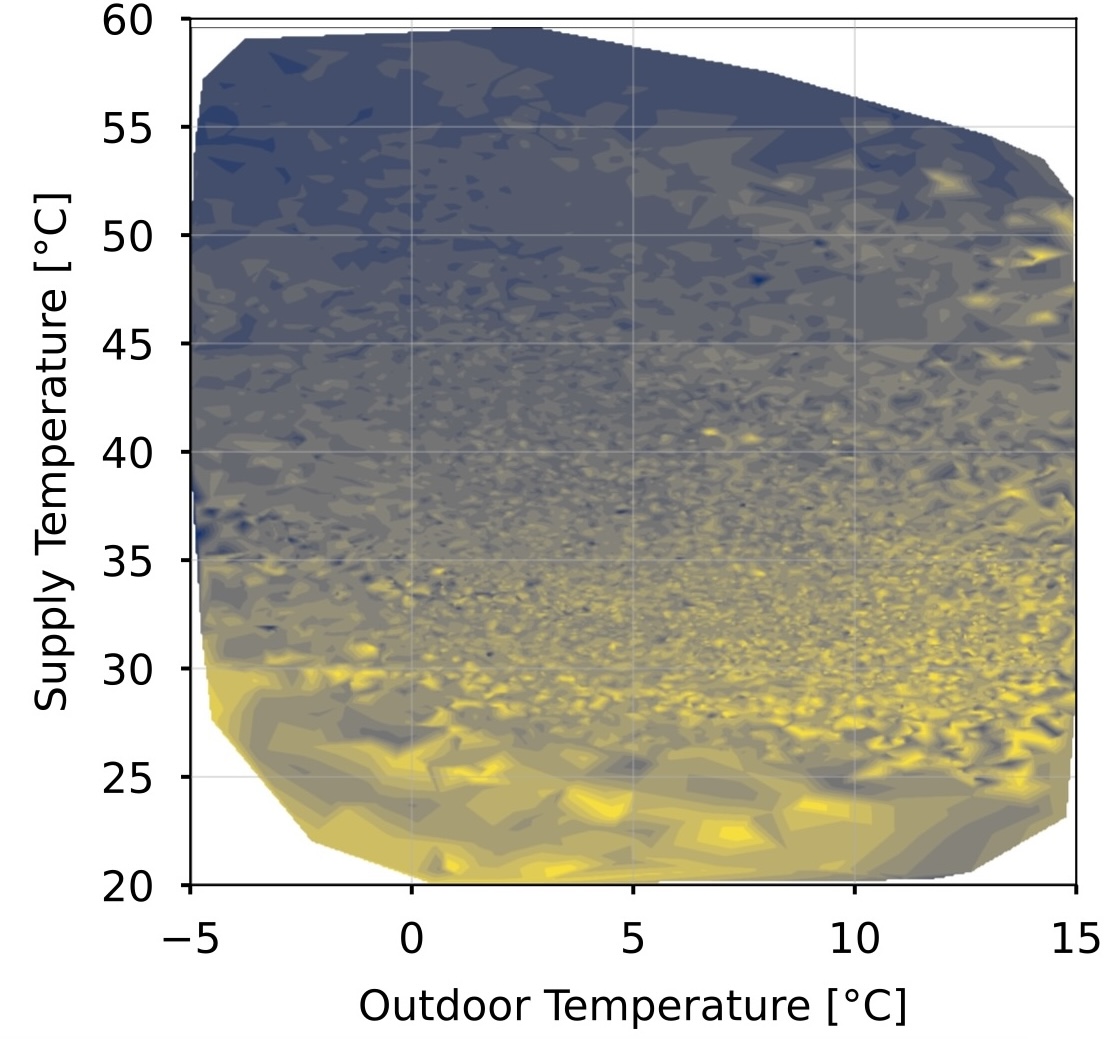 Estimation of energy efficiency of heat pumps in residential buildings using real operation dataNature Communications, 2025
Estimation of energy efficiency of heat pumps in residential buildings using real operation dataNature Communications, 2025As heat pumps become more prevalent in residential buildings, effective performance monitoring is essential. Design flaws, incorrect settings, and faults can escalate energy consumption and costs, leading to discrepancies in user expectations and hindering the widespread adoption of this technology crucial for the heating transition. However, field studies using large data sets to offer insights into real-world performance and methods for identifying low-performing systems in practical, scalable applications are lacking. In the largest field study to date, we analyze sensor data from 1023 heat pumps across Central Europe monitored over two years. Based on existing approaches for controlled laboratory conditions, we derive methods to evaluate and classify real-world performance using operational data. Applying these methods, we find that 17% of air-source and 2% of ground-source heat pumps do not meet existing efficiency standards. Additionally, around 10% of systems are oversized, while approximately 1% are undersized. This underscores the need for standardized post-installation performance evaluation procedures and digital tools to provide actionable feedback for users and installers to enhance operational efficiency and guide future installations.
@article{BRUDERMUELLER/HPEfficiency, title = {Estimation of energy efficiency of heat pumps in residential buildings using real operation data}, journal = {Nature Communications}, volume = {16}, number = {1}, pages = {2834}, year = {2025}, doi = {https://doi.org/10.1038/s41467-025-58014-y}, author = {Brudermueller, Tobias and Potthoff, Ugne and Fleisch, Elgar and Staake, Thorsten and Wortmann, Felix}, keywords = {Heat Pump, Energy Efficiency, Performance, Residential Building, Real-World Operation, Appliance Monitoring, Machine Learning, Sensor Data}, } -
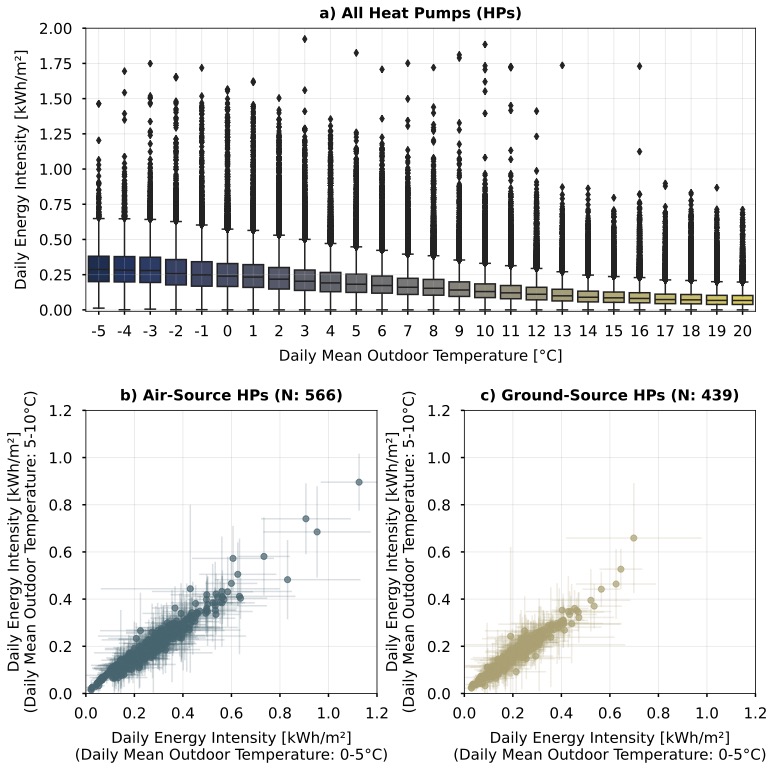 HEAPO – An Open Dataset for Heat Pump Optimization with Smart Electricity Meter Data and On-Site Inspection ProtocolsIn Proceedings of the 16th ACM International Conference on Future and Sustainable Energy Systems, 2025
HEAPO – An Open Dataset for Heat Pump Optimization with Smart Electricity Meter Data and On-Site Inspection ProtocolsIn Proceedings of the 16th ACM International Conference on Future and Sustainable Energy Systems, 2025Heat pumps are essential for decarbonizing residential heating but consume substantial electrical energy, impacting operational costs and grid demand. Many systems run inefficiently due to planning flaws, operational faults, or misconfigurations. While optimizing performance requires skilled professionals, labor shortages hinder large-scale interventions. However, digital tools and improved data availability create new service opportunities for energy efficiency, predictive maintenance, and demand-side management. To support research and practical solutions, we present an open-source dataset of electricity consumption from 1,408 households with heat pumps and smart electricity meters in the canton of Zurich, Switzerland, recorded at 15-minute and daily resolutions between 2018-11-03 and 2024-03-21. The dataset includes household metadata, weather data from 8 stations, and ground truth data from 410 field visit protocols collected by energy consultants during system optimizations. Additionally, the dataset includes a Python-based data loader to facilitate seamless data processing and exploration.
@inproceedings{BRUDERMUELLER/HEAPO, author = {Brudermueller, Tobias and Fleisch, Elgar and Gonzalez-Vaya, Marina and Staake, Thorsten}, title = {HEAPO – An Open Dataset for Heat Pump Optimization with Smart Electricity Meter Data and On-Site Inspection Protocols}, year = {2025}, isbn = {9798400711251}, publisher = {Association for Computing Machinery}, address = {New York, NY, USA}, doi = {10.1145/3679240.3734637}, booktitle = {Proceedings of the 16th ACM International Conference on Future and Sustainable Energy Systems}, pages = {699–711}, numpages = {13}, keywords = {heat pump, optimization, smart electricity meter, open energy data}, location = {Rotterdam, Netherlands}, series = {E-Energy '25}, } -
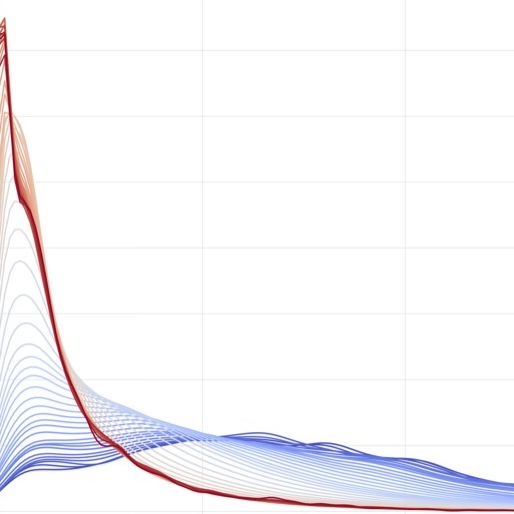 Rapidly Trainable Large-Scale Probabilistic Heat Pump Load Forecasting: A Kernel Density Estimation ApproachLeo Semmelmann, and Tobias BrudermuellerIn Proceedings of the 16th ACM International Conference on Future and Sustainable Energy Systems, 2025
Rapidly Trainable Large-Scale Probabilistic Heat Pump Load Forecasting: A Kernel Density Estimation ApproachLeo Semmelmann, and Tobias BrudermuellerIn Proceedings of the 16th ACM International Conference on Future and Sustainable Energy Systems, 2025As the electrification of heating accelerates, accurate and scalable probabilistic forecasting of heat pump loads becomes increasingly important for grid operators, utilities, and other practitioners. While state-of-the-art methods such as quantile gradient boosting offer high forecast accuracy, they are often computationally intensive and difficult to scale for large datasets. To address this challenge, we propose a Kernel Density Estimation (KDE)-based approach for probabilistic load forecasting in households with heat pumps. Using real-world data from 1,193 Swiss households, we benchmark KDE against quantile gradient boosting regarding forecast accuracy—measured via pinball loss—and computational efficiency. Our results show that KDE performs slightly better in 8 out of 9 quantiles while reducing training time by 3500x, though at the cost of higher inference time due to its sampling-based quantile estimation.
@inproceedings{BRUDERMUELLER/KDE, author = {Semmelmann, Leo and Brudermueller, Tobias}, title = {Rapidly Trainable Large-Scale Probabilistic Heat Pump Load Forecasting: A Kernel Density Estimation Approach}, year = {2025}, isbn = {979840071125}, publisher = {Association for Computing Machinery}, address = {New York, NY, USA}, doi = {10.1145/3679240.3734640}, booktitle = {Proceedings of the 16th ACM International Conference on Future and Sustainable Energy Systems}, pages = {727–732}, numpages = {6}, keywords = {Heat pumps, load forecasting, kernel density estimation}, location = {Rotterdam, Netherlands}, series = {E-Energy '25}, } -
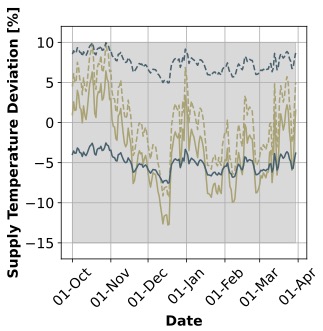 Optimization of heating curves for heat pumps in operation: Outdoor temperature ranges for energy-efficient heating curve shiftsApplied Energy, 2025
Optimization of heating curves for heat pumps in operation: Outdoor temperature ranges for energy-efficient heating curve shiftsApplied Energy, 2025In the light of global sustainability efforts, heat pumps offer environmental benefits, but their complexity and potential misconfigurations often lead to homeowner dissatisfaction due to inaccurate heating and lower-than-expected efficiency. Among the most important and complex settings is the heating curve and yet there are no easy-to-use methods to optimize it after its initial set-up. This study aims to develop ready-to-use guidelines for optimizing the heating curve with energy-efficient adjustments that improve room comfort and prevent suboptimal user changes, all without requiring additional sensors like room thermostats. Based on interpretable linear models, estimated on 3995 air-to-water heat pumps, located in Central Europe, we select the least energy-intensive heating curve shift for each outdoor temperature, needed to meet room thermal comfort. We find that the standard parallel shift of the heating curve is only the optimal approach when the average outdoor temperature is between 2 ∘C and 5 ∘C. Outside this range, the heating curve should be moved at its starting or the endpoint. Simulation shows that by translating user input to the room controller with our proposed changes, 84.42% of the heating curves can be improved, reducing the share of misconfigured heating curves from 24.01% to 7.08%. This leads to an average reduction in yearly energy consumption of 4.02% and an increase in the seasonal coefficient of performance by 2.59% on average. By introducing ready-to-use heating curve improvement guidelines, we aim to increase efficiency and confidence in heat pump technology, ensuring its adoption to meet carbon emission targets.
@article{BRUDERMUELLER/HeatingCurve, title = {Optimization of heating curves for heat pumps in operation: Outdoor temperature ranges for energy-efficient heating curve shifts}, journal = {Applied Energy}, volume = {389}, pages = {125725}, year = {2025}, issn = {0306-2619}, author = {Potthoff, Ugne and Brudermueller, Tobias and Hopf, Konstantin and Wortmann, Felix}, doi = {https://doi.org/10.1016/j.apenergy.2025.125725}, }
2024
-
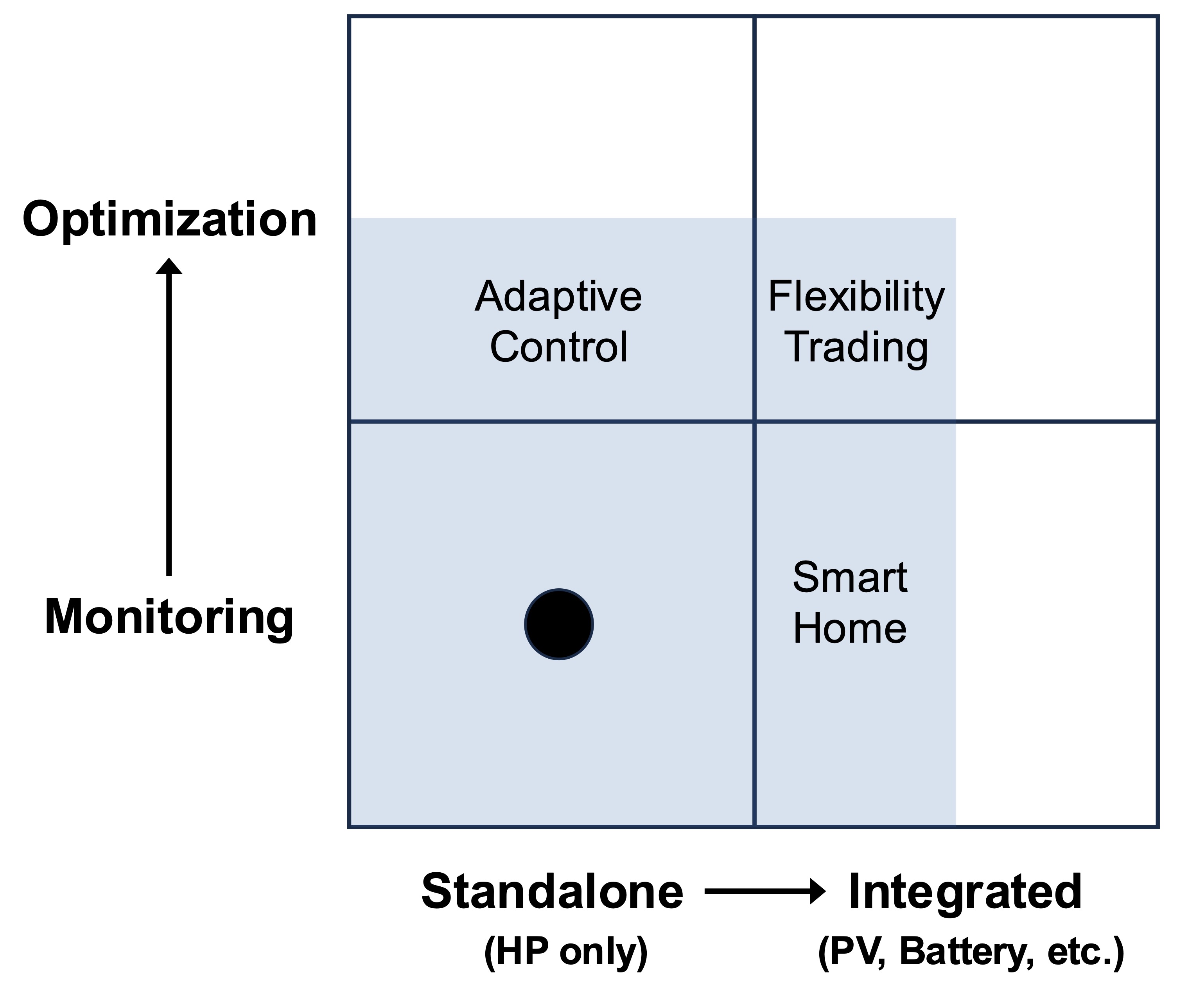 Machine Learning for Heat Pump Optimization in Residential Buildings: Data-Driven Insights, Digital Monitoring Approaches, and Service OpportunitiesTobias BrudermuellerETH Zurich, 2024
Machine Learning for Heat Pump Optimization in Residential Buildings: Data-Driven Insights, Digital Monitoring Approaches, and Service OpportunitiesTobias BrudermuellerETH Zurich, 2024To meet the carbon emissions reduction targets set under the Paris Agreement and effectively combat climate change, transitioning to sustainable heating practices in residential buildings is essential. Heat pumps are a pivotal technology in this effort to provide domestic hot water and space heating with high energy efficiency. The International Energy Agency projects that up to 600 million heat pumps will need to be installed globally by 2030 to achieve a net-zero scenario, potentially reducing greenhouse gases equivalent to the current annual emissions of all cars in Europe. However, several challenges hinder the widespread adoption and effective operation of heat pumps, causing many countries to fall short of their installation targets. Currently, global installation rates indicate a 58% shortfall of the targets needed to achieve the net-zero scenario. One major challenge is the significant shortage of trained professionals capable of installing and maintaining heat pumps. Additionally, the replacement of fossil fuel-based heating systems with heat pumps involves substantial costs. Many homeowners are reluctant to invest in this technology due to insufficient and frequently changing policy frameworks. Another challenge is the variability in real-world heat pump performance, which often diverges from the efficiency levels reported on product certificates, resulting in unmet expectations regarding operational costs. Furthermore, many users and installers lack familiarity with heat pump technology, which differs significantly from traditional gas and oil boilers that have been optimized over decades. This knowledge gap can lead to systems that are improperly sized, malfunctioning, or misconfigured, and there is a lack of effective feedback mechanisms for performance assessment. Finally, the widespread installation of heat pumps can place added strain on power grids, increasing both peak and total electricity demand, especially if the systems are not operating efficiently. This thesis addresses the critical issues in heat pump adoption and operation by investigating how energy data from widely deployed smart electricity meters and sensor data from modern, internet-connected heat pumps can be leveraged to optimize performance. Through a series of four articles, it develops practical, machine learning-based methodologies for evaluating the performance of residential heat pumps post-installation and identifying systems with energy-saving potential. Focusing on heat pumps used for heating applications in Central Europe, the thesis further provides data-driven insights into real-world operation. The methodologies and findings can directly be applied to energy efficiency services, delivering personalized feedback on heat pump performance to guide installers, users, and other stakeholders. The first article develops methods for classifying heat pumps into efficiency categories, assessing system sizing, and estimating energy-saving potential through configuration adjustments using sensor data. Analysis of field data from 1,023 heat pumps over two years shows that 11% are incorrectly sized, with 17% of air-source and 2% of ground-source heat pumps failing to meet efficiency standards. The second article introduces a method for distinguishing heat pumps based on their modulation capabilities using 15-minute resolution smart meter data. A K-nearest neighbor algorithm effectively differentiates between fixed speed and variable speed systems, achieving an AUC of 0.976 with just one week of data, where the heat pump is measured alongside other appliances. The third article introduces a deep learning algorithm designed to isolate heat pump patterns from aggregated 15-minute energy measurements recorded by a smart meter. Tested with data from 363 households, the algorithm achieves an average RMSE of 0.169 kWh, comparable to the accuracy of previous studies utilizing high-resolution measurements. The fourth article develops an algorithm to extract key indicators of heat pump on-off behavior from smart meter data and identify atypical systems. Analysis of 503 Swiss households over 21 months shows that cycling behavior is relatively consistent across different building and heat pump characteristics. However, outliers in cycling behavior are more than twice as common in air-source heat pumps compared to ground-source heat pumps. In addition to its technical contributions and data-driven insights, this thesis offers a comprehensive overview of emerging trends and service opportunities at the intersection of heat pump technology and digitalization. It examines the shift from a fragmented heat pump market to a more consolidated structure dominated by a few major players, and discusses how this consolidation might impact prices, demand, and the potential entry of new competitors. The thesis also explores the transition in digital services from standalone monitoring to integrated optimization solutions that consider all building components. While energy efficiency monitoring will remain crucial, the focus is expected to shift towards leveraging heat pump operational flexibility to capitalize on dynamic electricity prices and lower operational costs. This will likely involve advanced machine learning algorithms for optimization and adaptive control, potentially running locally on newer heat pump models rather than in the cloud. Finally, the thesis anticipates that new standards may mandate heat pump monitoring and control, driving technical standardization and facilitating the scaling of services across various manufacturers and models.
@phdthesis{BRUDERMUELLER/DoctoralThesis, title = {Machine Learning for Heat Pump Optimization in Residential Buildings: Data-Driven Insights, Digital Monitoring Approaches, and Service Opportunities}, school = {ETH Zurich}, year = {2024}, author = {Brudermueller, Tobias}, keywords = {machine learning, heat pump, residential building, monitoring, optimization, service opportunities, digitalization, smart meter data, sensor data, in-situ measurements}, doi = {https://doi.org/10.3929/ethz-b-000714050}, } -
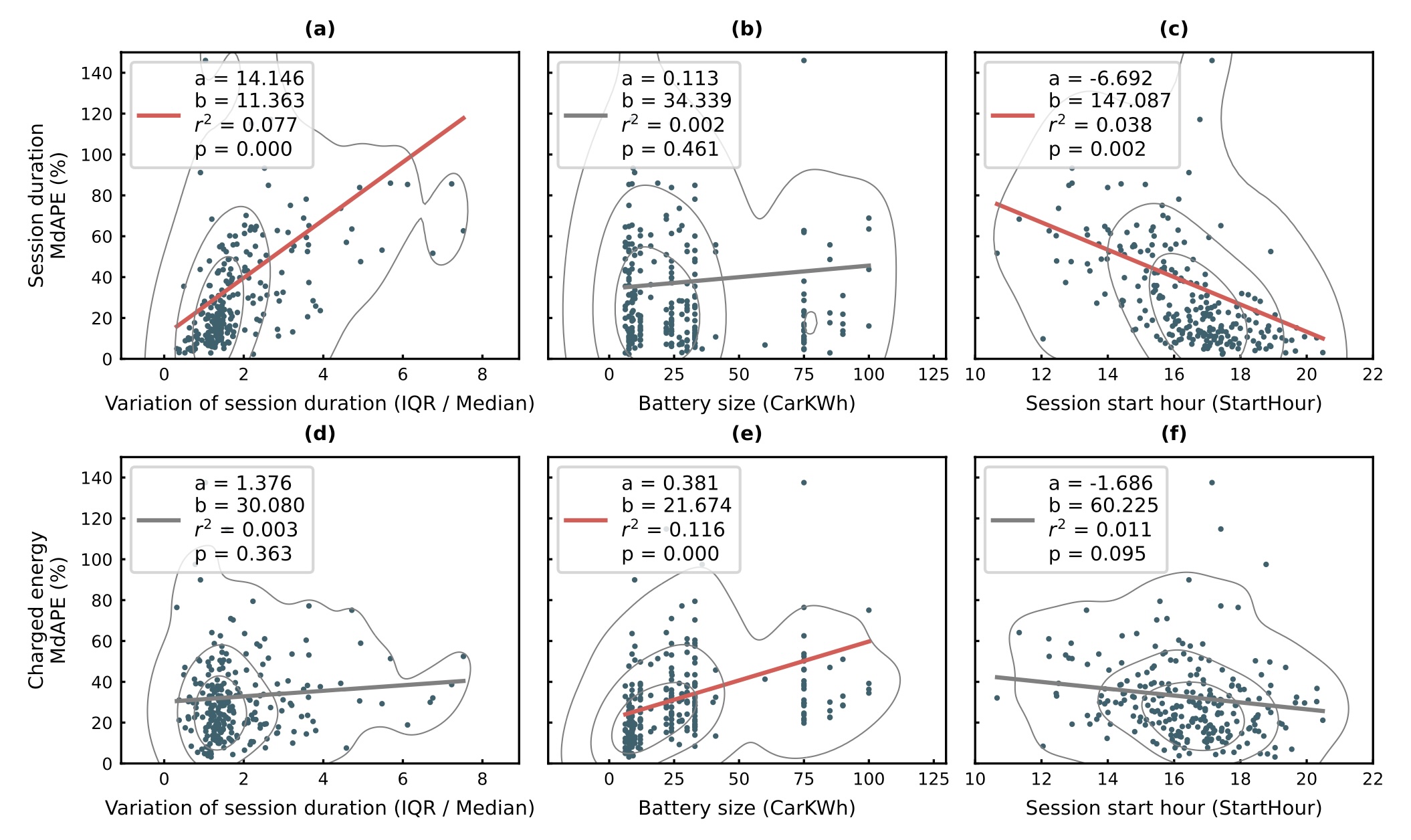 Predictability of electric vehicle charging: explaining extensive user behavior-specific heterogeneityApplied Energy, 2024
Predictability of electric vehicle charging: explaining extensive user behavior-specific heterogeneityApplied Energy, 2024Smart charging systems can reduce the stress on the power grid from electric vehicles by coordinating the charging process. To meet user requirements, such systems need input on charging demand, i.e., departure time and desired state of charge. Deriving these parameters through predictions based on past mobility patterns allows the inference of realistic values that offer flexibility by charging vehicles until they are actually needed for departure. While previous studies have addressed the task of charging demand predictions, there is a lack of work investigating the heterogeneity of user behavior, which affects prediction performance. In this work we predict the duration and energy of residential charging sessions using a dataset with 59,520 real-world measurements from 267 electric vehicles. While replicating the results put forth in related work, we additionally find substantial differences in prediction performance between individual vehicles. An in-depth analysis shows that vehicles that on average start charging later in the day can be predicted better than others. Furthermore, we demonstrate how knowledge that a vehicles charges over night significantly increases prediction performance, reducing the mean absolute percentage error of plugged-in duration predictions from over 200% to 15%. Based on these insights, we propose that residential smart charging systems should focus on predictions of overnight charging to determine charging demand. These sessions are most relevant for smart charging as they offer most flexibility and need for coordinated charging and, as we show, they are also more predictable, increasing user acceptance.
@article{BRUDERMUELLER/EVCharging, author = {Kreft, Markus and Brudermueller, Tobias and Fleisch, Elgar and Staake, Thorsten}, title = {Predictability of electric vehicle charging: explaining extensive user behavior-specific heterogeneity}, year = {2024}, journal = {Applied Energy}, volume = {370}, pages = {123544}, issn = {0306-2619}, doi = {https://doi.org/10.1016/j.apenergy.2024.123544}, keywords = {Electric vehicles, Smart charging, Demand response, Demand prediction, Real-world data}, } -
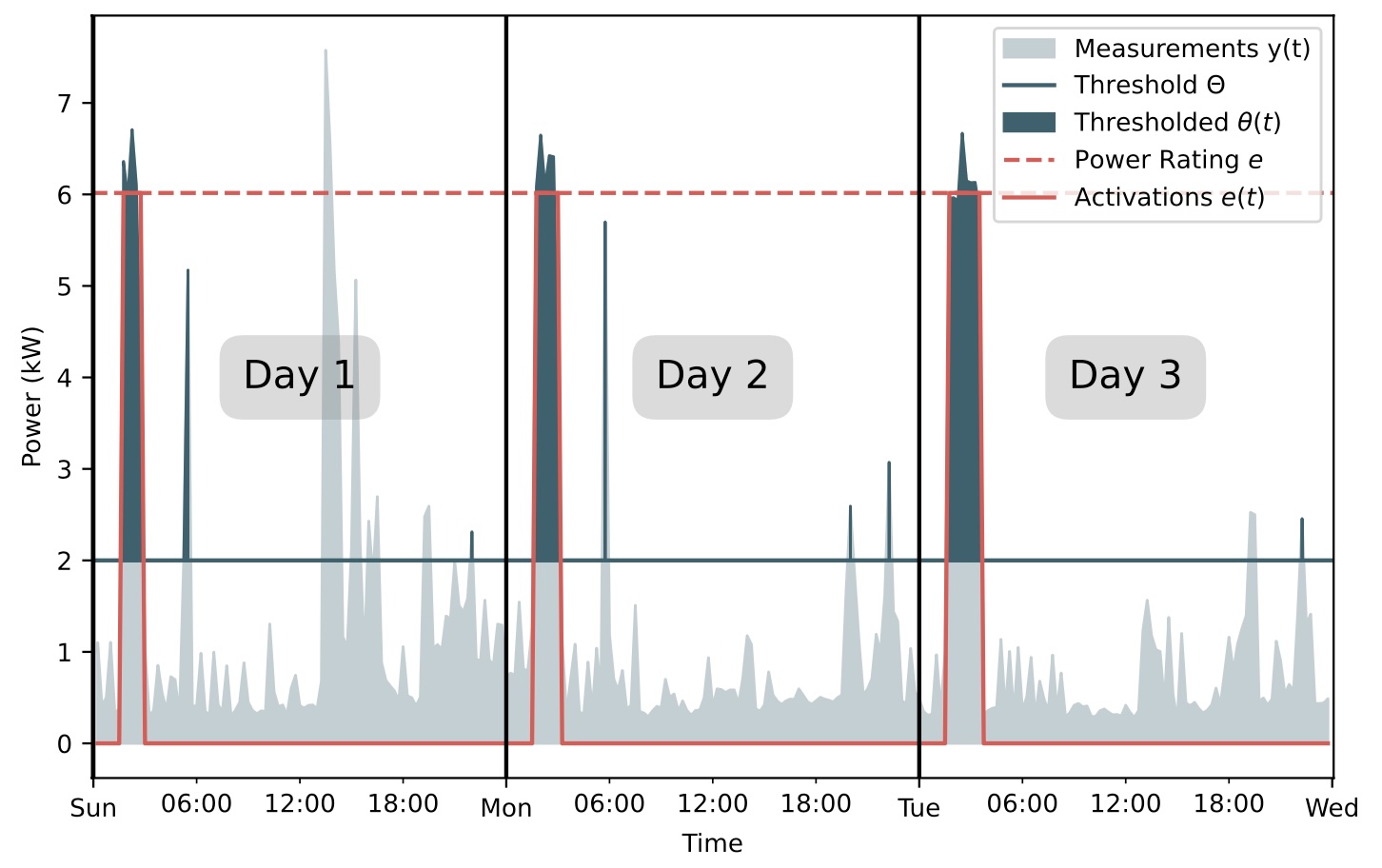 Identifying Electric Water Heaters from Low-Resolution Smart Meter DataMarkus Kreft, Tobias Brudermueller, Tyler Anderson, and Thorsten StaakeIn 2024 IEEE Conference on Technologies for Sustainability (SusTech), 2024
Identifying Electric Water Heaters from Low-Resolution Smart Meter DataMarkus Kreft, Tobias Brudermueller, Tyler Anderson, and Thorsten StaakeIn 2024 IEEE Conference on Technologies for Sustainability (SusTech), 2024Despite an increasing share of heat pumps, electric water heaters are still widely used in residential applications. Their high connected load and energy consumption combined with their thermal inertia make them ideal candidates for demand response and energy saving programs. However, due to missing or outdated information about installation locations, it is difficult to run large and targeted campaigns. Thanks to an increased roll-out of advanced metering infrastructure, smart meter data is widely available, opening new opportunities to generate the missing information. In our work, we identify electric water heaters from lowresolution smart meter data with a 15-minute sampling rate and estimate their consumption using a trainingfree detection method that is easy to interpret and adapt. On a real-world data set with measurements from 1,962 meters over one year, we achieve 89.4% accuracy in detecting households with electric water heaters. We predict heating capacity with a mean absolute error of 0.9 kW. We also find that the installed electric water heaters lead to a peak demand that is 51% higher than in a setting without electric water heating, highlighting the importance of appropriate load management. Our method can be directly incorporated into existing demand response applications.
@inproceedings{BRUDERMUELLER/EWHDisaggregation, title = {Identifying Electric Water Heaters from Low-Resolution Smart Meter Data}, booktitle = {2024 IEEE Conference on Technologies for Sustainability (SusTech)}, year = {2024}, volume = {}, number = {}, pages = {128-135}, author = {Kreft, Markus and Brudermueller, Tobias and Anderson, Tyler and Staake, Thorsten}, doi = {10.1109/SusTech60925.2024.10553590}, keywords = {Meters, Accuracy, Runtime, Heat pumps, Water heating, Smart meters, Demand response, Electric Water Heater, Smart Meter Data, Low Resolution, Demand Response, Peak Shaving, Load Shifting}, }
2023
-
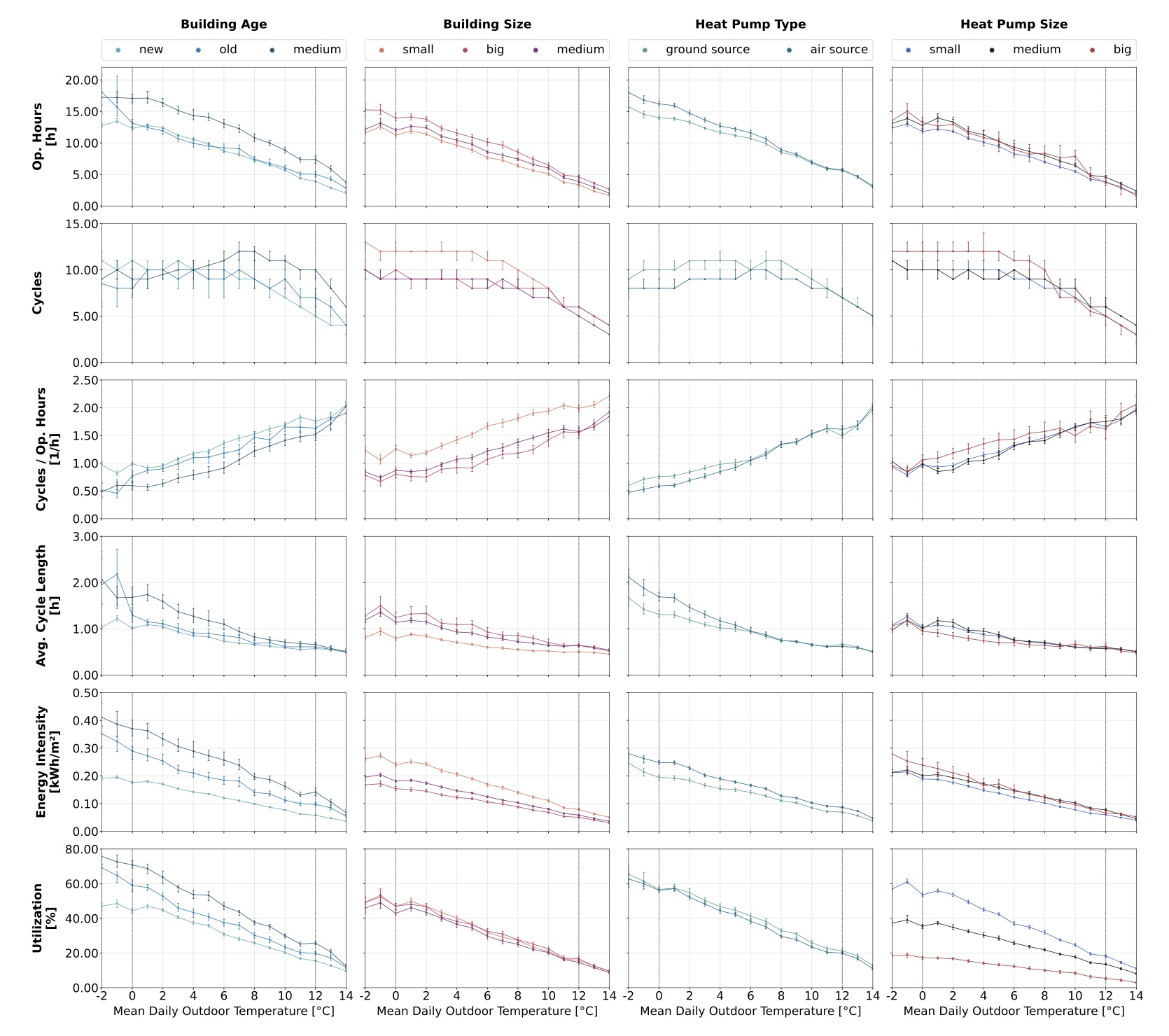 Large-scale monitoring of residential heat pump cycling using smart meter dataApplied Energy, 2023
Large-scale monitoring of residential heat pump cycling using smart meter dataApplied Energy, 2023Heat pumps play an essential role in decarbonizing the building sector, but their electricity consumption can vary significantly across buildings. This variability is closely related to their cycling behavior (i.e., the frequency of on–off transitions), which is also an indicator for improper sizing and non-optimal settings and can affect a heat pump’s lifetime. Up to now it has been unclear which cycling behaviors are typical and atypical for heat pump operation in the field and importantly, there is a lack of methods to identify heat pumps that cycle atypically. Therefore, in this study we develop a method to monitor heat pumps with energy measurements delivered by common smart electricity meters, which also cover heat pumps without network connectivity. We show how smart meter data with 15-minute resolution can be used to extract key indicators about heat pump cycling and outline how atypical behavior can be detected after controlling for outdoor temperature. Our method is robust across different building characteristics and varying times of observation, does not require contextual information, and can be implemented with existing smart meter data, making it suitable for real-world applications. Analyzing 503 heat pumps in Swiss households over a period of 21 months, we further describe behavioral differences with respect to building and heat pump characteristics and study the relationship between heat pumps’ cycling behavior, energy efficiency, and appropriate sizing. Our results show that outliers in cycling behavior are more than twice as common for air-source heat pumps than for ground-source heat pumps.
@article{BRUDERMUELLER/2023121734, title = {Large-scale monitoring of residential heat pump cycling using smart meter data}, journal = {Applied Energy}, volume = {350}, pages = {121734}, year = {2023}, issn = {0306-2619}, doi = {https://doi.org/10.1016/j.apenergy.2023.121734}, author = {Brudermueller, Tobias and Kreft, Markus and Fleisch, Elgar and Staake, Thorsten}, keywords = {Smart meter data, Heat pump, Cycling behavior, outlier detection, Residential buildings, Energy efficiency, Appliance monitoring, Real-world operation, Machine learning}, } -
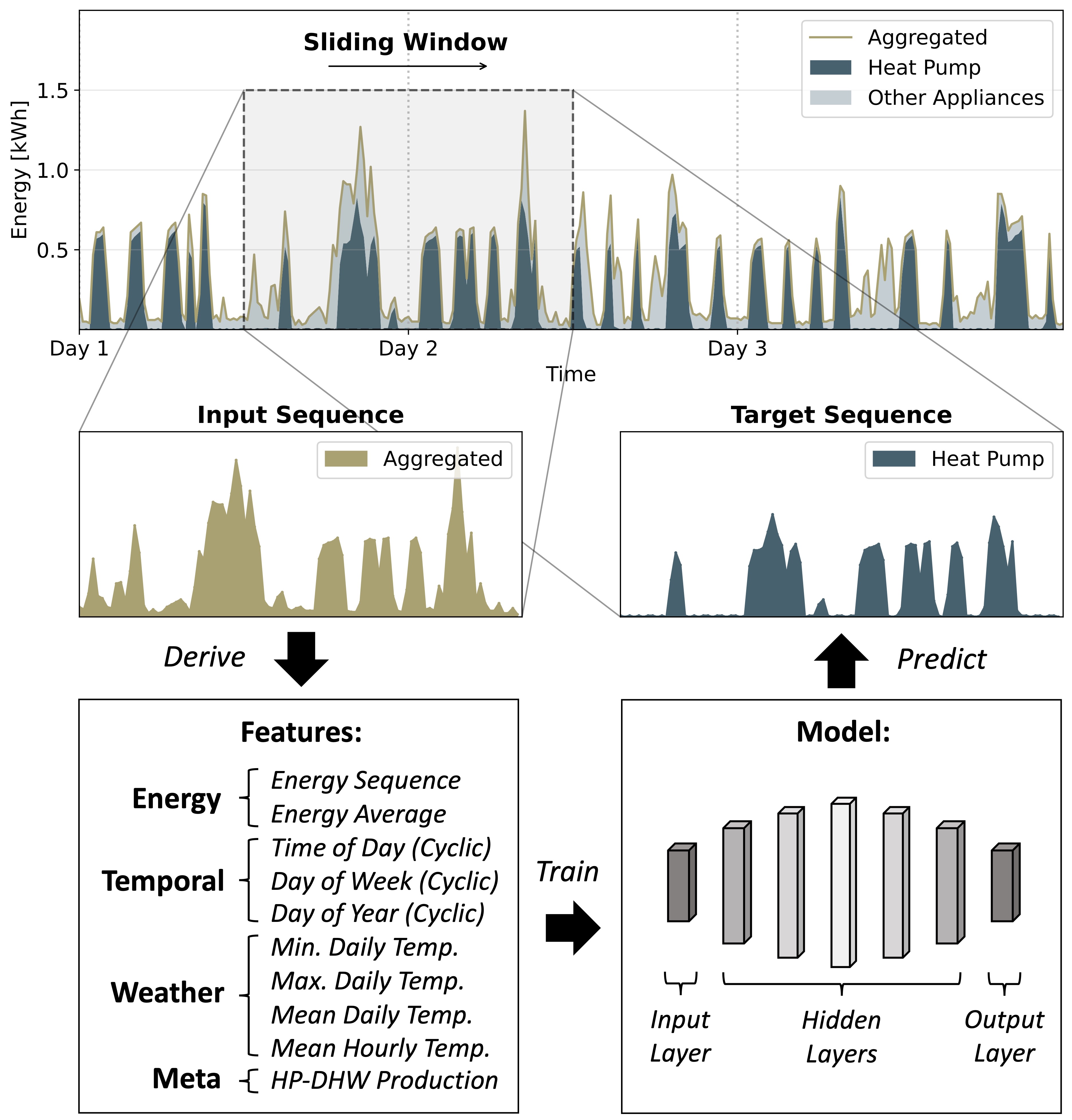 Disaggregation of Heat Pump Load Profiles From Low-Resolution Smart Meter DataTobias Brudermueller, Fabian Breer, and Thorsten StaakeIn Proceedings of the 10th ACM International Conference on Systems for Energy-Efficient Buildings, Cities, and Transportation, 2023
Disaggregation of Heat Pump Load Profiles From Low-Resolution Smart Meter DataTobias Brudermueller, Fabian Breer, and Thorsten StaakeIn Proceedings of the 10th ACM International Conference on Systems for Energy-Efficient Buildings, Cities, and Transportation, 2023As the number of heat pumps installed in residential buildings increases, their energy-efficient operation becomes increasingly important to reduce costs and ensure the stability of the power grid. The deployment of smart electricity meters results in large amounts of smart meter data that can be used for heat pump optimization. However, sub-metering infrastructure to monitor heat pumps’ energy consumption is costly and rarely available in practice. Non-intrusive load monitoring addresses this issue and disaggregates appliance-level consumption from aggregate measurements. However, previous studies use high-resolution data of active and reactive power and do not focus on heat pumps. In this context, our study is the first to disaggregate heat pump load profiles using commonly available smart meter data with energy measurements at 15-minute resolution. We use a sliding-window approach to train and test deep learning models on a real-world data set of 363 Swiss households with heat pumps observed over a period of 8 years. Evaluating our approach with a 5-fold cross-validation, our best model achieves a mean R2 score of 0.832 and an average RMSE of 0.169 kWh, which is similar to previous work that uses high-resolution measurements of active and reactive power. Our algorithms enable real-world applications to monitor the energy efficiency of heat pumps in operation and to estimate their flexibility for demand response programs.
@inproceedings{BRUDERMUELLER/10.1145/3600100.3623731, author = {Brudermueller, Tobias and Breer, Fabian and Staake, Thorsten}, title = {Disaggregation of Heat Pump Load Profiles From Low-Resolution Smart Meter Data}, year = {2023}, isbn = {9798400702303}, publisher = {Association for Computing Machinery}, address = {New York, NY, USA}, doi = {10.1145/3600100.3623731}, booktitle = {Proceedings of the 10th ACM International Conference on Systems for Energy-Efficient Buildings, Cities, and Transportation}, pages = {228–231}, numpages = {4}, keywords = {Non-Intrusive Load Monitoring, Low Resolution, Load Disaggregation, Smart Meter Data, Heat Pump Optimization, Energy Efficiency}, location = {Istanbul, Turkey}, series = {BuildSys '23}, } -
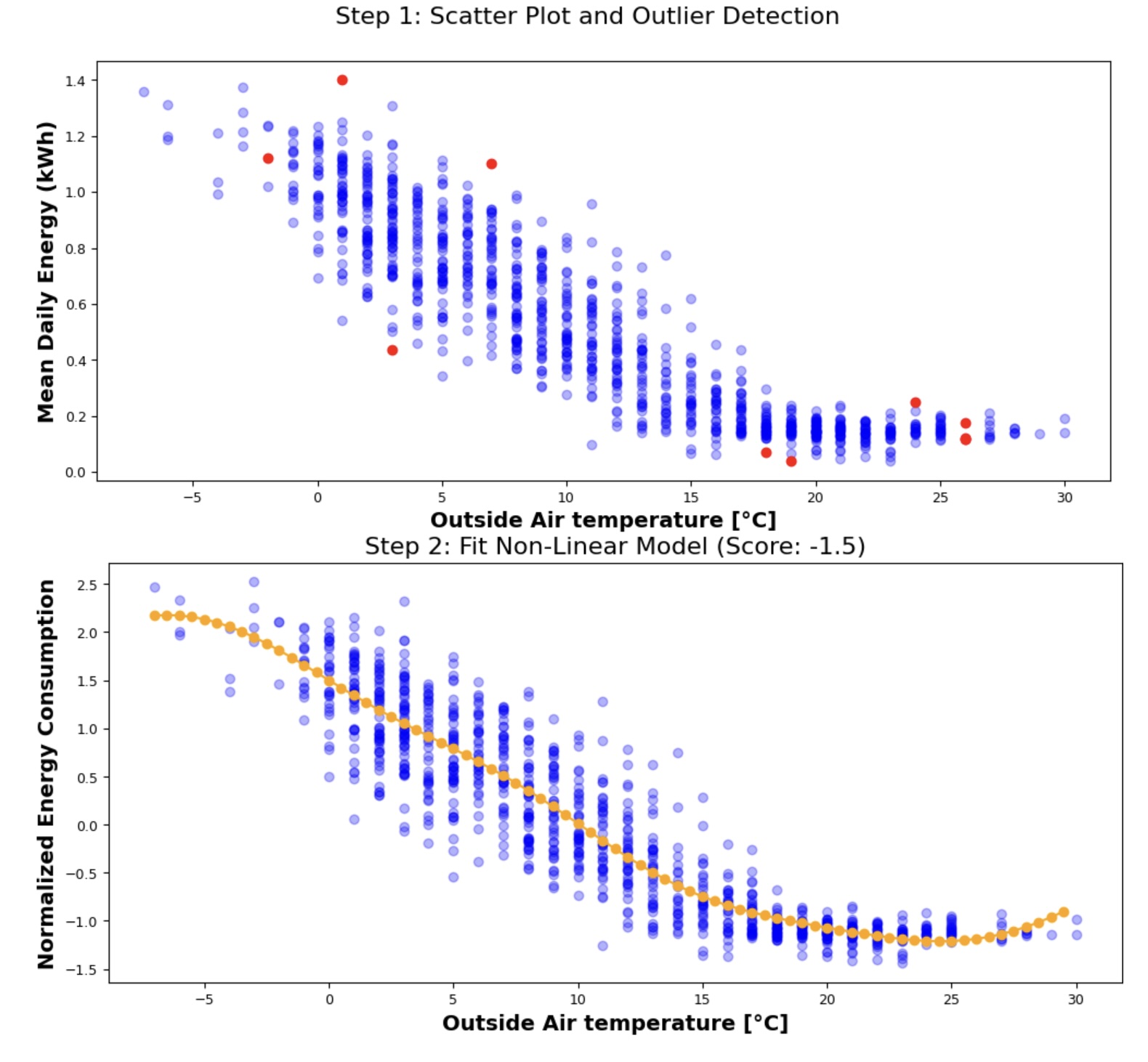 Smart meter data analytics: Practical use-cases and best practices of machine learning applications for energy data in the residential sectorTobias Brudermueller, and Markus KreftIn International Conference on Learning Representations (ICLR 2023) Workshop on Tackling Climate Change with Machine Learning, 2023
Smart meter data analytics: Practical use-cases and best practices of machine learning applications for energy data in the residential sectorTobias Brudermueller, and Markus KreftIn International Conference on Learning Representations (ICLR 2023) Workshop on Tackling Climate Change with Machine Learning, 2023To cope with climate change, the energy system is undergoing a massive transformation. With the electrification of all sectors, the power grid is facing high additional demand. As a result, the digitization of the grid is becoming more of a focus. The smart grid relies heavily on the increasing deployment of smart electricity meters around the world. The corresponding smart meter data is typically a time series of power or energy measurements with a resolution of 1s to 60 min. This data provides valuable insights and opportunities for monitoring and controlling activities in the power grid. In this tutorial, we therefore provide an overview of best practices for analyzing smart meter data. We focus on machine learning applications and low resolution (15-60 minutes) energy data in a residential setting. We only use real-world datasets and cover use-cases that are highly relevant for practical applications. Although this tutorial is specifically tailored to an audience from the energy domain, we believe that anyone from the data analytics and machine learning community can benefit from it, as many techniques are applicable to any time series data. Through our tutorial, we hope to foster new ideas, contribute to an interdisciplinary exchange between different research fields, and educate people about energy use.
@inproceedings{BRUDERMUELLER/2023ICLR, title = {Smart meter data analytics: Practical use-cases and best practices of machine learning applications for energy data in the residential sector}, author = {Brudermueller, Tobias and Kreft, Markus}, booktitle = {International Conference on Learning Representations (ICLR 2023) Workshop on Tackling Climate Change with Machine Learning}, year = {2023}, organization = {Climate Change AI}, video = {https://iclr.cc/virtual/2023/workshop/12828#collapse-sl-13527}, }
2022
-
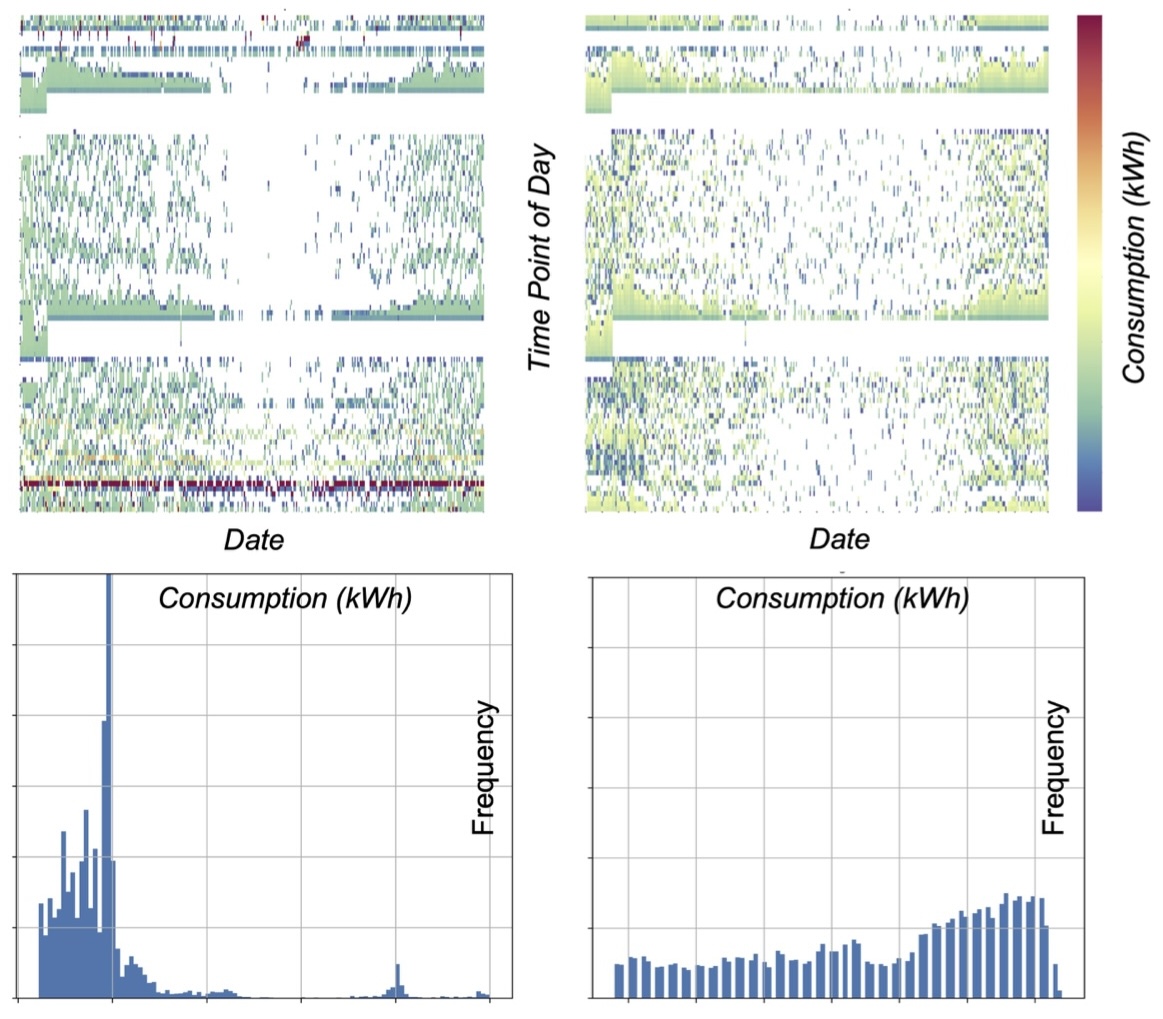 Automatic Differentiation of Variable and Fixed Speed Heat Pumps With Smart Meter DataTobias Brudermueller, Florian Wirth, Andreas Weigert, and Thorsten StaakeIn 2022 IEEE International Conference on Communications, Control, and Computing Technologies for Smart Grids (SmartGridComm), 2022
Automatic Differentiation of Variable and Fixed Speed Heat Pumps With Smart Meter DataTobias Brudermueller, Florian Wirth, Andreas Weigert, and Thorsten StaakeIn 2022 IEEE International Conference on Communications, Control, and Computing Technologies for Smart Grids (SmartGridComm), 2022With the increasing prevalence of heat pumps in private households, the need for optimization is growing. At the same time, the growing number of active smart electricity meters generates data that can be used for remote monitoring. In this paper, we focus on the automatic differentiation between fixed speed and variable speed heat pumps using smart meter data. This distinction is relevant because it is necessary for evaluating the state or cyclic behavior of a heat pump. In addition, identifying fixed speed heat pumps is important because they are known to be the less efficient systems and therefore may be preferred targets in energy efficiency or replacement campaigns. Our methods are applied to electricity data from 171 Swiss households with a resolution of 15 minutes. In this setting, a K-Nearest Neighbor model achieves a mean AUC of 0.976 compared to 0.5 of a biased random guess model.
@inproceedings{BRUDERMUELLER/9961055, author = {Brudermueller, Tobias and Wirth, Florian and Weigert, Andreas and Staake, Thorsten}, booktitle = {2022 IEEE International Conference on Communications, Control, and Computing Technologies for Smart Grids (SmartGridComm)}, title = {Automatic Differentiation of Variable and Fixed Speed Heat Pumps With Smart Meter Data}, year = {2022}, volume = {}, number = {}, pages = {412-418}, doi = {10.1109/SmartGridComm52983.2022.9961055}, }
2020
-
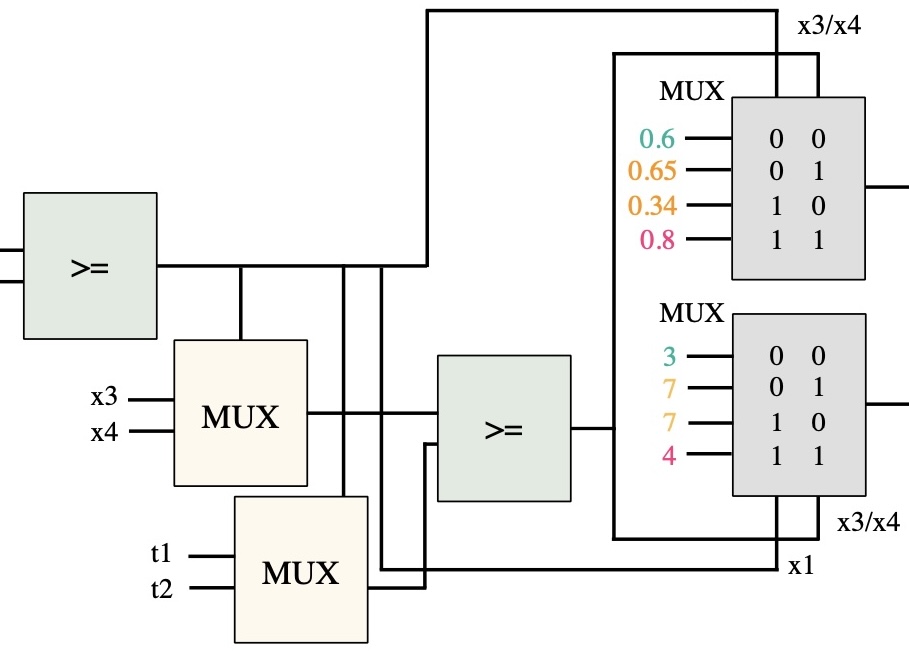 Making logic learnable with neural networksarXiv preprint arXiv:2002.03847, 2020
Making logic learnable with neural networksarXiv preprint arXiv:2002.03847, 2020While neural networks are good at learning unspecified functions from training samples, they cannot be directly implemented in hardware and are often not interpretable or formally verifiable. On the other hand, logic circuits are implementable, verifiable, and interpretable but are not able to learn from training data in a generalizable way. We propose a novel logic learning pipeline that combines the advantages of neural networks and logic circuits. Our pipeline first trains a neural network on a classification task, and then translates this, first to random forests, and then to AND-Inverter logic. We show that our pipeline maintains greater accuracy than naive translations to logic, and minimizes the logic such that it is more interpretable and has decreased hardware cost. We show the utility of our pipeline on a network that is trained on biomedical data. This approach could be applied to patient care to provide risk stratification and guide clinical decision-making.
@article{brudermueller2020making, title = {Making logic learnable with neural networks}, author = {Brudermueller, Tobias and Shung, Dennis L and Stanley, Adrian J and Stegmaier, Johannes and Krishnaswamy, Smita}, journal = {arXiv preprint arXiv:2002.03847}, year = {2020}, }